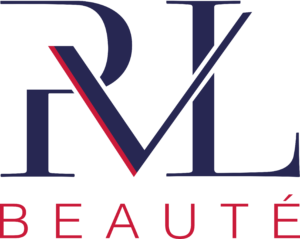 Appreciated in the perfume and cosmetics industry for its aesthetic and mechanical qualities in the creation of molded and injected parts, such as bottle caps and make-up cases, zamak suffers from a lack of awareness of its qualities in terms of recyclability and durability. TNT Group, Metapack and PVL Beauté, major players in the transformation of this alloy, joined by designer Alnoor Mitha from Bharat (Objets de convoitises), joined forces at Paris Packaging Week to provide the first concrete answers.
Appreciated in the perfume and cosmetics industry for its aesthetic and mechanical qualities in the creation of molded and injected parts, such as bottle caps and make-up cases, zamak suffers from a lack of awareness of its qualities in terms of recyclability and durability. TNT Group, Metapack and PVL Beauté, major players in the transformation of this alloy, joined by designer Alnoor Mitha from Bharat (Objets de convoitises), joined forces at Paris Packaging Week to provide the first concrete answers.
The alloy derives its name (zamak or zamac) from its composition, made up of 95% Zinc, a material available in abundance from low-CO2 extraction, 4% Aluminium, then Magnesium and Copper (Kupfer, in German). Often misunderstood by the general public, zamak is nevertheless an everyday material for consumers, used in a wide range of applications such as automobiles, hardware and fittings. In cosmetics and perfume, it is used to create caps or decorative elements for bottles, appreciated for its resistance, the possibility of complex shapes and also for its cool feel and density, in keeping with the codes of luxury.
Filière de recyclage niche
Mainly composed of zinc, zamak is – like this widely used metal – infinitely reusable at end-of-life, with no loss of properties. But like all materials, it must be collected for recycling. Leading manufacturer of zamak caps for the perfume industry, TNT Group now wishes to accelerate this circularity approach. The manufacturer has therefore joined forces with the REAZN Group, European leader in recycled zamak. « REAZN buys collected zamak to manufacture recycled zamak. Our products, even those galvanized or with plastic inserts, can be recycled without any problem. So we asked ourselves how we could supply REAZN with zamak covers,” explains Thomas Diezinger, President of TNT Group. With the support of the CEDRE network, which recovers empty perfume bottles from Sephora stores, five tons of zamak were recovered and transformed into recycled ingots. « “With CEDRE, the Nordechets group generally recovers the glass from the bottles and the alcohol base, while the rest is incinerated. This time, we were able to add zamak to the collection, and what was a cost – because we had to manage its disposal – has become a resource that REAZN can use” », comments Thomas Diezinger.
The reliability of existing processes
But as we know, not all perfume bottles are returned to the store to be collected and integrated into specialized recycling circuits. For the consumer, the alternative is to place end-of-life product packaging – including decorative elements and caps – in the appropriate sorting garbage can. To find out more about the fate of zamak parts entering the household waste stream, Metapack, a company also specializing in the design of top-of-the-range zamak packaging, cases and caps for the beauty industry, set out to track their journey through the sorting centers. With the help of the Derichbourg company, the team was able to observe eddy current capture of 90% of zamak parts when they are alone in the sorting process, and 77% when they are mixed with other items. It should be noted that the shape and size of the object have an impact on detection: long items such as slides are better selected and recovered (between 95 and 100%), whereas round items, which can roll down the conveyors, are only selected and recovered at 40%. “It is important to note that zamak can be easily detected in existing recycling channels. This opens up the possibility of recycling.“, says Annette Der Minassian, CEO of Metapack.
Life cycle analysis
Finally, PVL Beauté, a manufacturer of luxury packaging, looked at the data needed to analyze the life cycle of a product with a zamak component. The company found that the environmental impact analysis tools available, Spice by Quantis and Bee by Citeo, did not provide the correct information, particularly concerning zamak grades and the associated process. Starting with approximate data, the LCA cannot be representative. “Our aim is to help Quantis and Citeo to fill in their databases as accurately as possible, so as to avoid a poor rating by default. This is underway with the organizations concerned, but we’re only at the beginning.” says Jean Stanislas Orlowski, CEO of PVL Beauté. Although a number of unknowns remain, the initial results are more than encouraging. Collected through specialized channels, zamak is easily integrated into recycling circuits. In the domestic waste stream, it can be sorted with all non-ferrous metals, thanks to eddy currents. What remains to be seen is what happens next, which will probably vary according to the size and equipment of the sorting centers. Little known, probably because of the small quantities used in the packaging world, “yet this material possesses remarkable aesthetic and technical qualities for the production of parts with complex shapes.“, says Bharat designer Alnoor Mitha.
